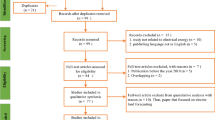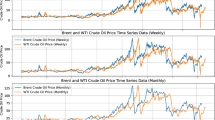Abstract
This paper proposes a self-similar local neuro-fuzzy (SSLNF) model with mutual information-based input selection algorithm for the short-term electricity demand forecasting. The proposed selfsimilar model is composed of a number of local models, each being a local linear neuro-fuzzy (LLNF) model, and their associated validity functions and can be interpreted itself as an LLNF model. The proposed model is trained by a nested local liner model tree (NLOLIMOT) learning algorithm which partitions the input space into axis-orthogonal sub-domains and then fits an LLNF model and its associated validity function on each sub-domain. Furthermore, the proposed approach allows different input spaces for rule premises (validity functions) and consequents (local models). This appealing property is employed to assign the candidate input variables (i.e., previous load and temperature) which influence short-term electricity demand in linear and nonlinear ways to local models and validity functions, respectively. Numerical results from short-term load forecasting in the New England in 2002 demonstrated the accuracy of the SSLNF model for the STLF applications.
Similar content being viewed by others
References
Wang Y, Xia Q, and Kang C, Secondary forecasting based on deviation analysis for short-term load forecasting, IEEE Trans. Power Syst., 2011, 26(2): 500–507.
Chen Y, Luh P B, Guan C, Zhao Y, Michel L D, Coolbeth M A, Friedland P B, and Rourke S J, Short-term load forecasting: Similar day-based wavelet neural networks, IEEE Trans. Power Syst., 2010, 25(1): 322–330.
Liu C W, Chang C S, and Su M C, Neuro fuzzy networks for voltage security monitoring based on synchronized phasor measurement, IEEE Trans. Power Syst., 1998, 13(2): 326–332.
Hanmandlu M and Chauhan B K, Load forecasting using hybrid models, IEEE Trans. Power Syst., 2011, 26(1): 20–29.
Taylor J W, Short-term load forecasting methods: An evaluation based on European data, IEEE Trans. Power Syst., 2007, 22(4): 2213–2219.
Amjady N, Short-term hourly load forecasting using time-series modeling with peak load estimation capability, IEEE Trans. Power Syst., 2001, 16(3): 498–505.
Moghram I and Rehman S, Analysis and evaluation of five short term load forecasting techniques, IEEE Trans. Power Syst., 1989, 4(4): 1484–1491.
Bakirtzis A G, Petridis V, Kiartzis S J, Alexiadis M C, and Maissis A H, A neural network short term load forecasting model for the Greekpower system, IEEE Trans. Power Syst., 1996, 11(2): 858–863.
Ho K L, Hsu Y Y, and Yang C C, Short term load forecasting using a multilayer neural network with an adaptive learning algorithm, IEEE Trans. Power Syst., 1992, 7(1): 141–149.
Khotanzad A, Zhou E, and Elragal H, A neuro fuzzy approach to short term load forecasting in price sensitive environment, IEEE Trans. Power Syst., 2002, 17(4): 1273–1282.
Liao G C and Tsao T P, Application of a fuzzy neural network combined with a chaos genetic algorithm and simulated annealing to short term load forecasting, IEEE Trans. Evol. Comput., 2006, 10(3): 330–340.
Zhang M G, Short-term load forecasting based on support vector machines regression, Proceedings of the International Conference on Machine Learning and Cybernetics, 2005, 7: 4310–4314.
Li G, Cheng C T, Lin J Y, and Zeng Y, Short-term load forecasting using support vector machine with SCE-UA algorithm, Proceedings of the 3rd International Conference on Natural Computation, 2007, 1: 290–294.
Lee C M and Ko C N, Short-term load forecasting using lifting scheme and ARIMA models, Expert Systems with Applications, 2011, 38(5): 5902–5911.
Agnaldo R R and Alexandre P A, Feature extraction via multiresolution analysis for short-term load forecasting, IEEE Trans. Power Syst., 2005, 20(1): 189–198.
Benauda D, Murtagh F, Starck J K, and Renaud O, Wavelet-based nonlinear multiscale decomposition model for electricity load forecasting, Neurocomputing, 2006, 70(1): 139–154.
Zhao Y, Luh P B, Bomgardner C, and Beerel G H, Short-term load forecasting: Multi-level wavelet neural networks with holiday corrections, Proceedings of IEEE Power and Energy Soc. General Meeting, Calgary, AB, Canada, 2009, 1–7.
Antonakakis N and Filis G, Oil prices and stock market correlation: A time-varying approach, International Journal of Energy and Statistics, 2013, 1(1): 17–29.
Xie H, Xun Z, and Wang S, The more the better: Forecasting oil price with decomposion-based vector autoregressive mode, International Journal of Energy and Statistics, 2013, 1(1): 45–53.
Hassani H, Heravi S, and Zhigljavsky A, Forecasting European Industrial Production with Singular Spectrum Analysis, International Journal of Forecasting, 2009, 25(1): 103–118.
Miranian A, Abdollahzade M, and Hassani H, Day-ahead electricity price analysis and forecasting by singular spectrum analysis, IET Generation, Transmission and Distribution, 2013, 7(4): 337–346.
Qadrdan M, Ghodsi M, and Wu J, Probabilistic wind power forecasting using a single forecast, International Journal of Energy and Statistics, 2013, 1(2): 99–111.
Junior L, Menezes M, Cassiano K, Pessanha J, and Souza R, Residential electricity consumption forecasting using a geometric combination approach, International Journal of Energy and Statistics, 2013, 1(2): 113–125.
Cassiano K, Junior L, Souza R, Moises M, Pessanha J, and Souza R, Hydroelectric energy forecast, International Journal of Energy and Statistics, 2013, 1(3): 205–214.
Fotis P and Thomakos D, Trading energy EFTs with an improved moving averaging strategy, International Journal of Energy and Statistics, 2013, 1(1): 31–43.
Hassani H and Mahmoudvand R, Multivariate singular spectrum analysis: A general view and new vector forecasting approach, International Journal of Energy and Statistics, 2013, 1(1): 55–83.
Hametner C and Jakubeb S, Nonlinear identification with local model networks using GTLS techniques and equality constraints, IEEE Trans. Neural Netw., 2011, 22(9): 1406–1418.
Abdollahzade M, Mahjoob M, Zaringhalam R, and Miranian A, Locally linear neuro-fuzzy (LLNF) electricity price forecasting in deregulated power markets, Int. J. Innovative computing, Inform. Control, 2010, 6(9): 1–15.
Iranmanesh H and Miranian A, Split ratio optimized local linear neuro fuzzy model for prediction: Application to oil consumption prediction, Presented at the 3rd IEEE Int. Conf. Intelligent Computing and Intelligent Systems, Guangzhou, China, 2011.
Abdollahzade M, Miranian A, and Faraji S, Application of emotional learning fuzzy inference systems and locally linear neuro-fuzzy models for prediction and simulation in dynamic systems, Accepted in the 2012 World Congress on Computational Intelligence, to be held, Brisbane, Australia.
Banfer O, Franke M, and Nelles O, Adaptive local model networks with higher degree polynomials, Proceedings of the Int. Conf. Control Automation and Systems, 2010, 168–171.
Yilmaz S and Oysal Y, fuzzy wavelet neural network models for prediction and identification of dynamical systems, IEEE Trans. Neural Netw., 2010, 21(10): 1599–1609.
ISO New England: Hourly historical data. [Online]. Available: http://iso-ne.com/markets/hstdata/hourly/hisdatapost/index.html (accessed 1 May 2012).
Iranmanesh H, Abdollahzade M, and Miranian A, Mid-term energy demand forecasting by hybrid neuro-fuzzy models, Energies, 2012, 5(1): 1–21.
Amjady N and Daraeepour A, Midterm demand prediction of electrical power systems using a new hybrid forecast technique, IEEE Trans. Power Syst., 2011, 26(2): 755–765.
Author information
Authors and Affiliations
Corresponding author
Rights and permissions
About this article
Cite this article
Hassani, H., Abdollahzadeh, M., Iranmanesh, H. et al. A self-similar local neuro-fuzzy model for short-term demand forecasting. J Syst Sci Complex 27, 3–20 (2014). https://doi.org/10.1007/s11424-014-3299-y
Received:
Revised:
Published:
Issue Date:
DOI: https://doi.org/10.1007/s11424-014-3299-y




